Driving Through Uncertainty: The Future of the Auto Industry in 2025
The global outlook for the automotive industry is uncertain amidst the unorganized regulatory environment and rising geopolitical tension. Additionally, a substantial downward revision in the BEV (Batter- Electric Vehicle) market share is anticipated in 2025. Year-to-date BEV volumes in Germany fell by a significant 27%. The stagnating market increases compliance costs for manufacturers, in terms of meeting emissions targets. The looming crisis necessitates urgent action, as it holds the entire road transportation and decarbonization policies at risk. The lack of widespread charging infrastructure and EV market stimulus is additionally contributing to this decline.
The recent recession, in the US, resulted in households destocking the vehicles, decreasing the ratio of vehicles per household to 2.03. Additionally, a study by the NRC (National Research Council of the National Academies) indicated that full electric vehicle technology is not expected to be commercially viable by 2025. However, the Center of Automotive Research (CAR), anticipates the ratio to level out at 2.07 vehicles per household, with 284 million operating light vehicles in the US. The expected growth is subject to mandates by the federal government to improve the fuel economy performance of vehicles, accompanied by additional safety and environmental mandates and regulations.
The lightweighting measures and traditional means stand to limit the fuel economy. Subsequently, a 10.0% market share for PEVs (Plug-in Electric Vehicles) by 2025, is anticipated as an aggressive target. Electrification will be necessary to meet the standards. The net price increase is another challenge facing the demand for light motor vehicles in 2025. The increase in the cost of electricity will additionally contribute to the demand-shrink for PEVs during the period.
The automotive industry can result in a modest growth in the US GDP provided an increase in new vehicle price inflation and modest scrappage. CAR forecasts a market of 17.9 million sales in 2025. The total personal consumption expenditures on new vehicles will grow to $713 billion. However, no dramatic changes are determined by market forces in the price and/or the performance or attributes of new motor vehicles, which could significantly alter the baseline for growth, in the US.
China is another prominent region for the growth of the automotive industry. The country can produce over 40 million Internal Combustion Engine (ICE) cars a year, and around 25 million EVs (Electric Vehicles) by late 2025, attributed to an increase of 4 million car production a year, supported by heavy investments in the automotive industry.
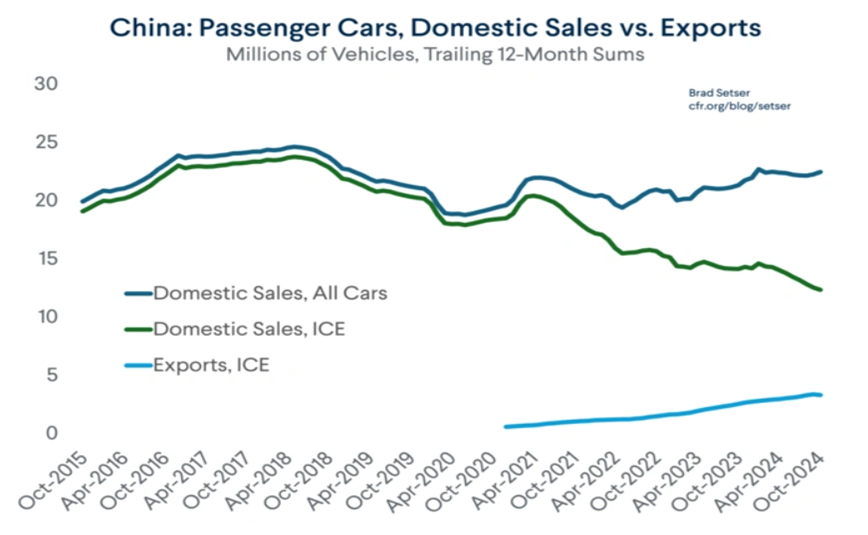
Source: Council on Foreign Relations
The economy is moving towards a widespread adoption of EVs freeing up ICE capacity for export. In China, the number of new electric car registrations reached 8.1 million in 2023, increasing by 35% relative to 2022. Thus, the domestic sales of ICE are declining, while the exports rising.
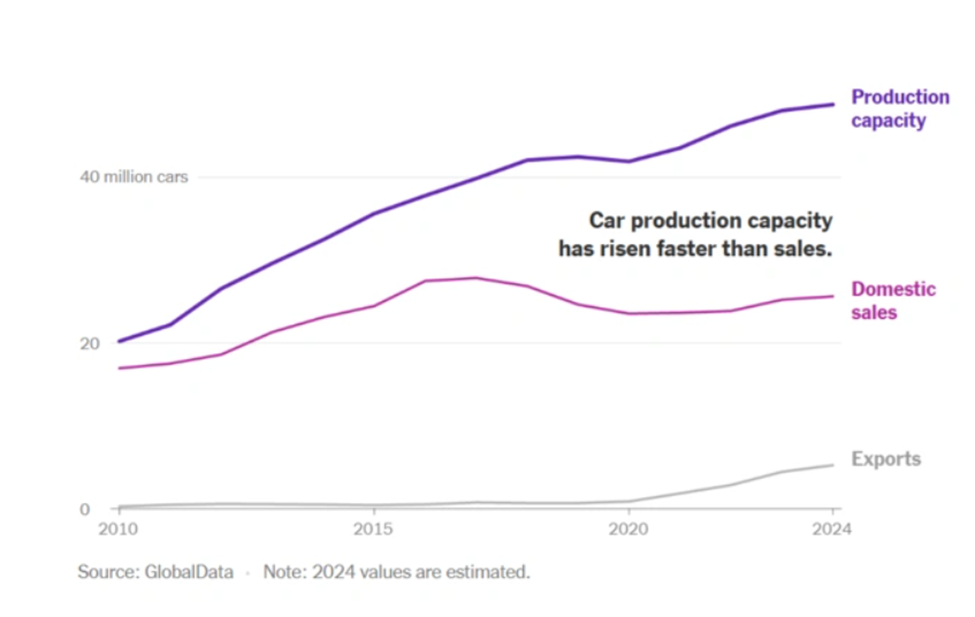
China currently can produce over two times its domestic demand. The production capacity is increasing more than the demand, raising concerns for the automotive industry in China. The market player’s optimism about the industry growth, and the subsequent investments is increasing production, however the demand is shrinking.
The political tension and the risk of further trade action are obstructing the attainment of its full potential. The import-export regulations, such as the 100% tariff the US levies on EVs imported from China, concern the expansion of the regional market. China is still performing in the global automotive exports, majorly with the EV segment, which is pushing toward the concentration of global automotive supply chains.
In September 2024, the European automotive industry reported growth owing to the increasing R&D investment in the region. The EU vehicular exports outstripped imports, generating a trade surplus growth of 5%. However, in October 2024, a report by ACEA (Association of European Automobile Manufacturers) highlighted the downward trajectory in EU car registrations. The market fell to 6.1% in 2024, lower than the 2023 numbers for the same period.
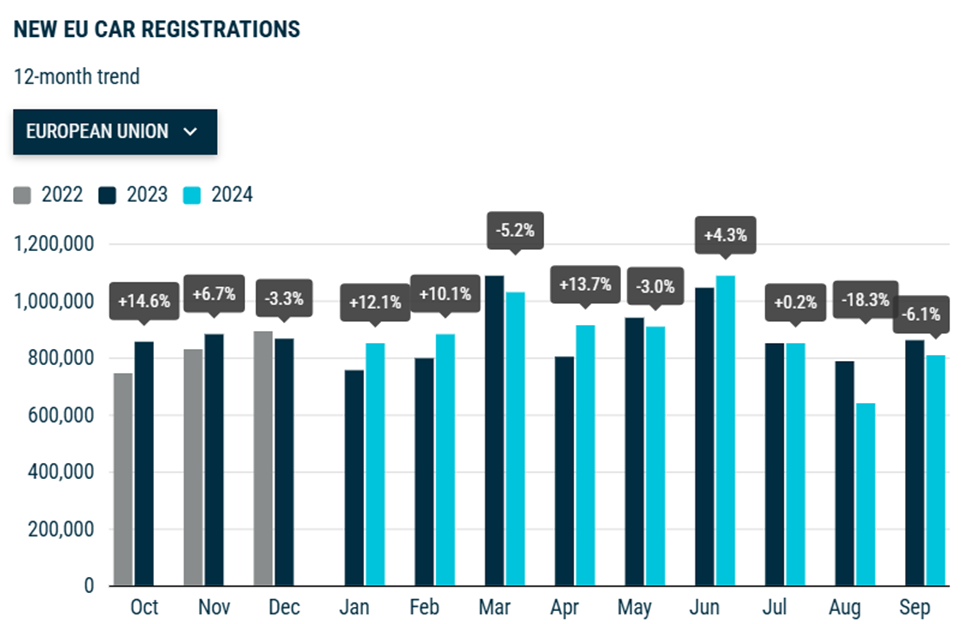
Source: ACEA
The new car registrations remained stable (+0.6%) and reached 8 million units in Spain (+4.7%) and Italy (+2.1%), while the French (-1.8%) and the German ( 1.0%) car markets declined. The market for battery-electric cars increased to 17.3% in September, up from 14.8% last year. Registrations of battery-electric cars rose by 9.8% to 139,702 units, however, the year-to-date market volume was still 5.8% lower than the same period last year. The year-to-date volumes dropped by 5.8%. The total market share fell to 13.1% from 14.0% last year. Additionally, the registrations for plug-in hybrid cars declined by 22.3%. In September, plug-in hybrid cars accounted for 6.8% of the market, down from 8.2% last year, with a total sale of 54,889 units.
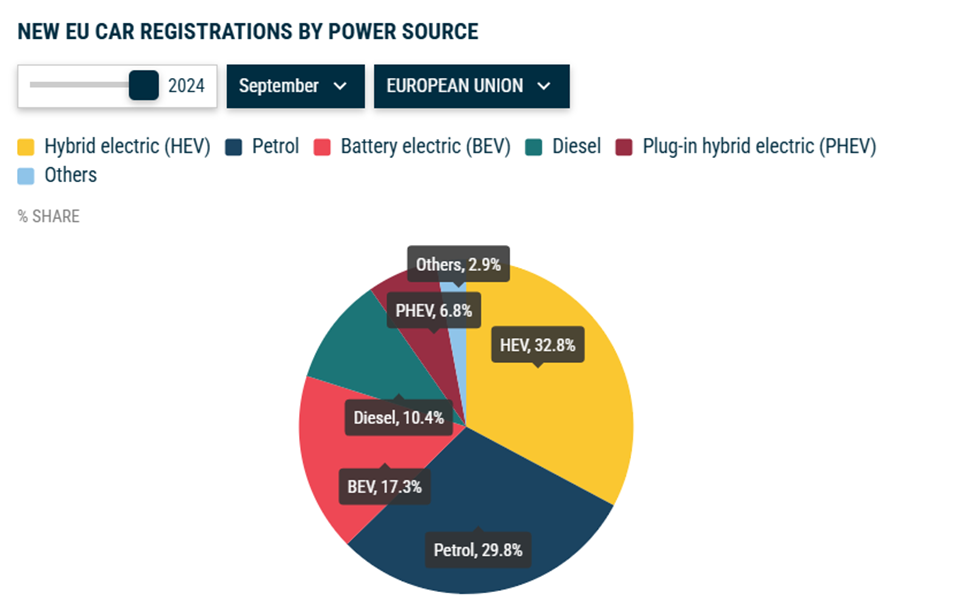
Source: ACEA
The market for hybrid-electric cars is surpassing petrol cars. The sales of petrol cars dropped by 17.9%, recording double-digit declines in France (-31.9%), Italy (-23.3%), Germany (-15.2%), and Spain ( 10.7%). Petrol cars now represent 29.8% of the market, which accounted for 34% in the same month last year. Additionally, the diesel car market declined by 23.5%, falling to a 10.4% share of the market. The overall decline was recorded in two-thirds of EU markets.
A similar trend was observed in Asia-Pacific. According to the Society of Indian Automotive Manufacturers, the overall Indian automobile industry remained strong in Q2 2024-25 with 8.9% growth compared to Q2 2023-24. Two and Three-Wheelers grew at 2.6% and 6.6% respectively, while Passenger Vehicles and Commercial Vehicles retarded in Q2 of 2024-25 compared to 2023-24.
Auto Industry Production and Sales Performance (2023-2024)
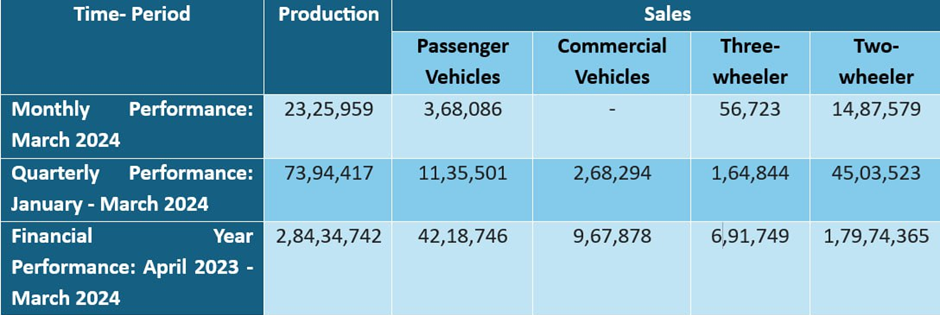
Source: Society of Indian Automotive Manufacturers

Moreover, the major market players in India are losing ground. The revenues are declining even after huge discounts. For instance, the half-yearly revenue of Tata Motors Ltd., declined to INR 32,103 crore ($3.8 billion) in 2024 from INR 34,136 crore ($4.1 billion) during the same period in 2023. Additionally, the revenue for the quarter that ended on June 30, 2024, was INR 16,732 crore ($2.0 billion), which declined to INR 15,371 crore ($1.8 billion), in the quarter that ended as at September 30, 2024.
Similarly, Maruti Suzuki India Ltd. witnessed a decline in the sales volume in Q2 FY2025 to INR 541,550 million ($6,498.6 million), from INR 552,055 million ($6,685.3 million), in Q2 FY24. The total sales for the company for the first half of FY25 was 1.3%, which declined by 1.9% in Q2 FY25. The sales for Mini (-3.7%), Compact (-14.8%), Mid-Size (-46.5%), and Vans (-0.7%) segments declined in Q2 FY25, marking a decline of 3.9% for the domestic sales in the quarter.
However, the Indian Government is hopeful about the regional automotive industry, owing to the rising adoption of EVs. The EV market is estimated to reach $7.1 billion (INR 50,000 crore) in India by 2025. The India Energy Storage Alliance estimated that the EV market in India is likely to increase at a CAGR of 36% by 2026. According to NITI Aayog and the Rocky Mountain Institute (RMI), India's EV finance industry is likely to reach $50 billion (Rs. 3.7 lakh crore) by 2030. Indian automotive industry is targeting to increase the export of vehicles by five times during 2016-26. However, the current market trajectory is standing contrary to the expectations.
According to the IEA (International Energy Agency), China, Europe, and the US represent around two-thirds of total car sales and stocks. Thus, the EV transition in these markets will have major repercussions in terms of global trends. The automotive industry is currently facing a downfall, as against the global estimations. However, the industry experts are of the view that the market can bounce back subject to strategic government regulations. Changes in the global trade policies, environmental regulations, and cost control measures can significantly check the current decline, and position the market towards growth in the near future.